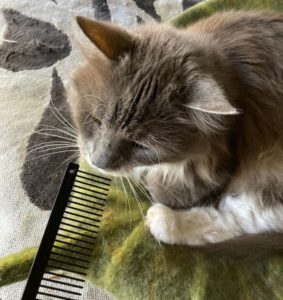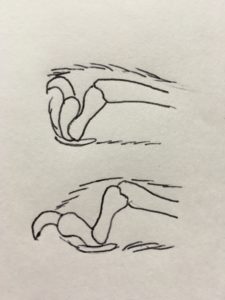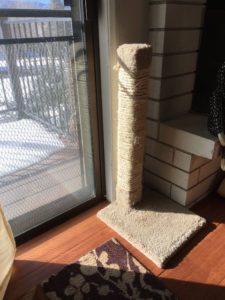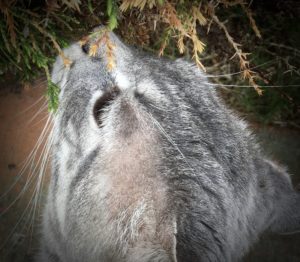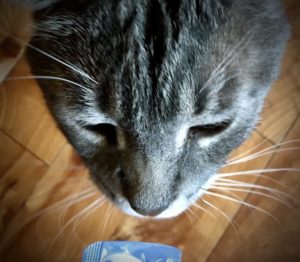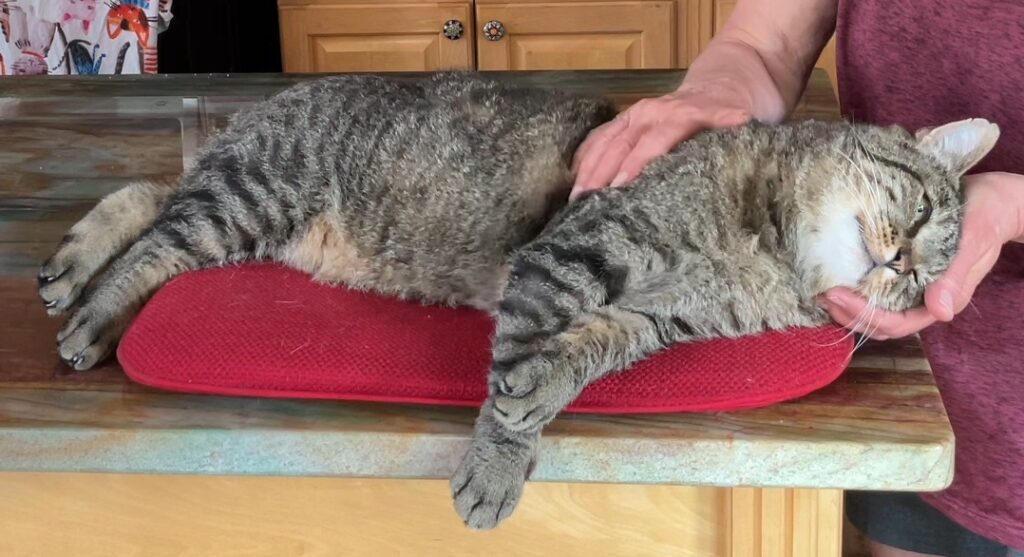
Cats have a reputation of being difficult to work with, particularly when it comes to giving medications. Some cats will take medication using treats but what about those cats who don’t care about treats?
Did you know that the right touch can relax your cat? Is it easier to medicate a relaxed cat?
the right touch can relax your cat
Recently, I watched an older cat – we’ll call her Bella – while the owner was away. Bella is an older female cat with diabetes, high blood pressure, and chronic rhinitis. She needs two insulin injections a day, oral blood pressure medication, oral allergy pills and nose drops. The owner gave the oral medications in capsules using a pill gun.
Giving the injections did not present an issue but oral medications were challenging. Bella has a reduced sense of smell due to her congestion so pills in treats were not appealing to her. The standard way of giving a pill by tilting her head back and trying to drop/slide the pill down resulted in Bella struggling and scratching me as she tried to get her paws up to keep that pill from going into her mouth. It took several tries to get the capsules into her.
Having been a veterinary technician in a cat hospital for over 10 years, my first thoughts were that I would need to towel wrap Bella to control her paws and then give the medication. I even briefly considered an old cat bag (no, no, no…) that I had used once or twice in the past.
Then, it struck me – if I could get Bella to relax and be calm, giving the medication should be much easier. I had been working with my cats trying to teach them to identify a state of calmness and it had helped my youngest cat manage arousal. Miso would get so aroused from petting that he would bite! Now I give him a verbal cue to be calm, coupled occasionally with some shoulder and back massage (see below), and it works!
what kind of Touch is relaxing?
Cats of the same social group greet each other by touching noses or rubbing against each other; some also twine their tails together while rubbing against each other. Some affiliated cats groom each other. These touches release pheromones which are thought to activate the “feel-good” neurotransmitters, oxytocin and dopamine (Reference 1).
Studies conducted at the California Institute of Technology on mice found that there are specific neurons that respond to stroking. These neurons can be activated by gentle but firm stroking (Reference 2). Deeper compressive touches like those used in massage therapy are also found to be calming (Reference 3). Both types of touch can relax your cat.
With cats, I start with some long, firm strokes of the upper spine, stopping at the end of the rib cage. I follow with gentle circular motions on the shoulders, then firm compressive touch of the muscles along the upper spine (for more detail, see “Touch can Relax Your Cat and Reduce Anxiety” ).
 success – the right touch can relax your cat!
success – the right touch can relax your cat!
Using this massage, Bella willingly laid down on her side. I was able to trim front nails and give medication with the pill gun. I followed each procedure with some more touch/massage.
In the following pilling trials, I added Churu paste on the pill gun tip to help lube the capsules for easier swallowing. Again, I started with massage before offering the capsules and ended with massage after giving the capsules.
After a few trials with the Churu being used as lubricant, Bella wanted more of the treat and we progressed to having her lick the treat off the pill gun, then sliding the pill gun in from the side as she swallowed the capsule. As before, I sandwiched procedures between sessions of touch/massage.
The net result was a cat that would come over and lay down for her capsules after three trials – no fighting, no defensive front paws. So, much easier.
When I had take care of Bella in the past, I had tried to use brushing as a reward. Using the right touch to relax her before medicating, was much more effective.
The right touch can relax your cat. Teaching your cat to relax on a mat or blanket has so many benefits. It can make giving medications, trimming claws or even shaving mats so much easier. And it also gives you and your cat time to relax together.
references
- Michael Gliksberg, Gil Levkowitz, Smells Familiar: Pheromone-Induced Neurotransmitter Switching Mediates Social Discrimination, Neuron,Volume 95, Issue 6, 2017, Pages 1229-1231, ISSN 0896-6273,https://doi.org/10.1016/j.neuron.2017.08.044.
- Vrontou, S., Wong, A., Rau, K. et al. Genetic identification of C fibres that detect massage-like stroking of hairy skin in vivo. Nature 493, 669–673 (2013). https://doi.org/10.1038/nature11810
- Leah J. Elias, Ishmail Abdus-Saboor, Bridging skin, brain, and behavior to understand pleasurable social touch,Current Opinion in Neurobiology, Volume 73, 2022, 102527,ISSN 0959-4388, https://doi.org/10.1016/j.conb.2022.102527.
- Bradshaw, J. and Ellis, S. The Trainable Cat, pp 78-82, ©2016 Basic Books, New York.

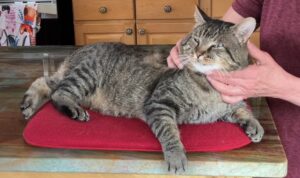 success – the right touch can relax your cat!
success – the right touch can relax your cat!
